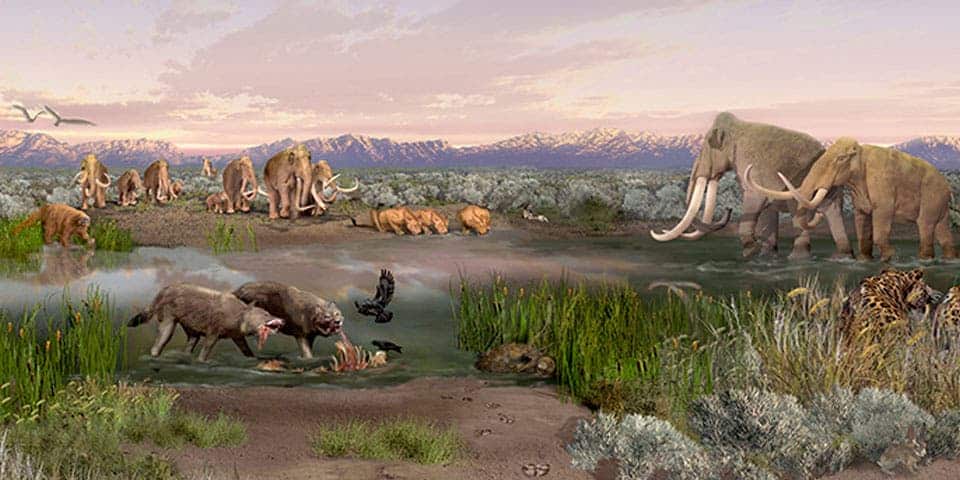Not so long ago, giant vertebrates ruled the world. There was a giant hornless rhino and a ground sloth larger than a modern elephant, among others. However, most of them went extinct 11-15,000 years ago, leaving behind just a few large animals. It’s uncertain exactly what caused their extinction, though various theories have included them being hunted and the earth getting too warm. It turns out that one cause was, as silly as it sounds, moisture. Scientists studied fossil bones of megafauna and, using a particular marker, found that moisture increased at the same time that the animals went extinct. More water from melting glacier caused trees and bushes to grow, leaving most of these large animals without the right habitat to survive.

Moisture markers
An international team of researchers coordinated by the Australian Centre for Ancient DNA (ACAD) at the University of Adelaide measured bone collagen nitrogen isotopes from ancient herbivore bones and teeth from Europe, Siberia, North and South America. When soil is moist, there is a lower ratio of the heavier nitrogen stable isotope 15N as compared to 14N. Therefore, it is a reliable marker for moisture levels in grasslands.
“We didn’t expect to find such clear signals of moisture increases occurring so widely across all of Europe, Siberia and the Americas. The timing varied between regions, but matches the collapse of glaciers and permafrost and occurs just before most species go extinct,” said study leader Professor Alan Cooper, ACAD Director.
The bones showed, through this marker, that the soil moisture has increased around that time that the megafauna went extinct. The animals that went extinct had low 15 N nitrogen isotope values as expected for high moisture conditions. Animals that survived the extinction, such as bison, llama, horses, showed through their isotopes that they ended up living in dry grasslands again.
Changing climates
“We find that on different continents the climate changes happened at different times, but they all showed that moisture increased massively just prior to extinction. The really elegant feature of this study is that it produces direct evidence from the fossils themselves – these extinct creatures are informing us about the climate they experienced leading up to their own extinctions,” said Professor Matthew Wooller, of the University of Alaska Fairbanks.

Grasslands were very common in the Pleistocene period. Megaherbivores had an important role in these ecosystems by harvesting and redistributing nutrients, as well as destroying emerging trees. After the last Ice Age, melting permafrost and glaciers added a lot of water as the earth warmed up. This extra liquid caused the grasslands to be replaced by peatlands, bogs, tundras, and forests. The ecosystem collapsed because herbivore resistant plant communities emerged. The animals that depended on extensive grasslands for food and a home couldn’t survive.
Additionally, this finding explains why there are still many living megafauna in Africa. They had a much lower rate of extinctions. Africa still has lots of intact stable grassland because it lies largely between a desert and monsoon region.
Journal reference: Rabanus-Wallace, M.T. 2017. Megafaunal isotopes reveal role of increased moisture on rangeland during late Pleistocene extinctions. Nature Ecology & Evolution
Was this helpful?



